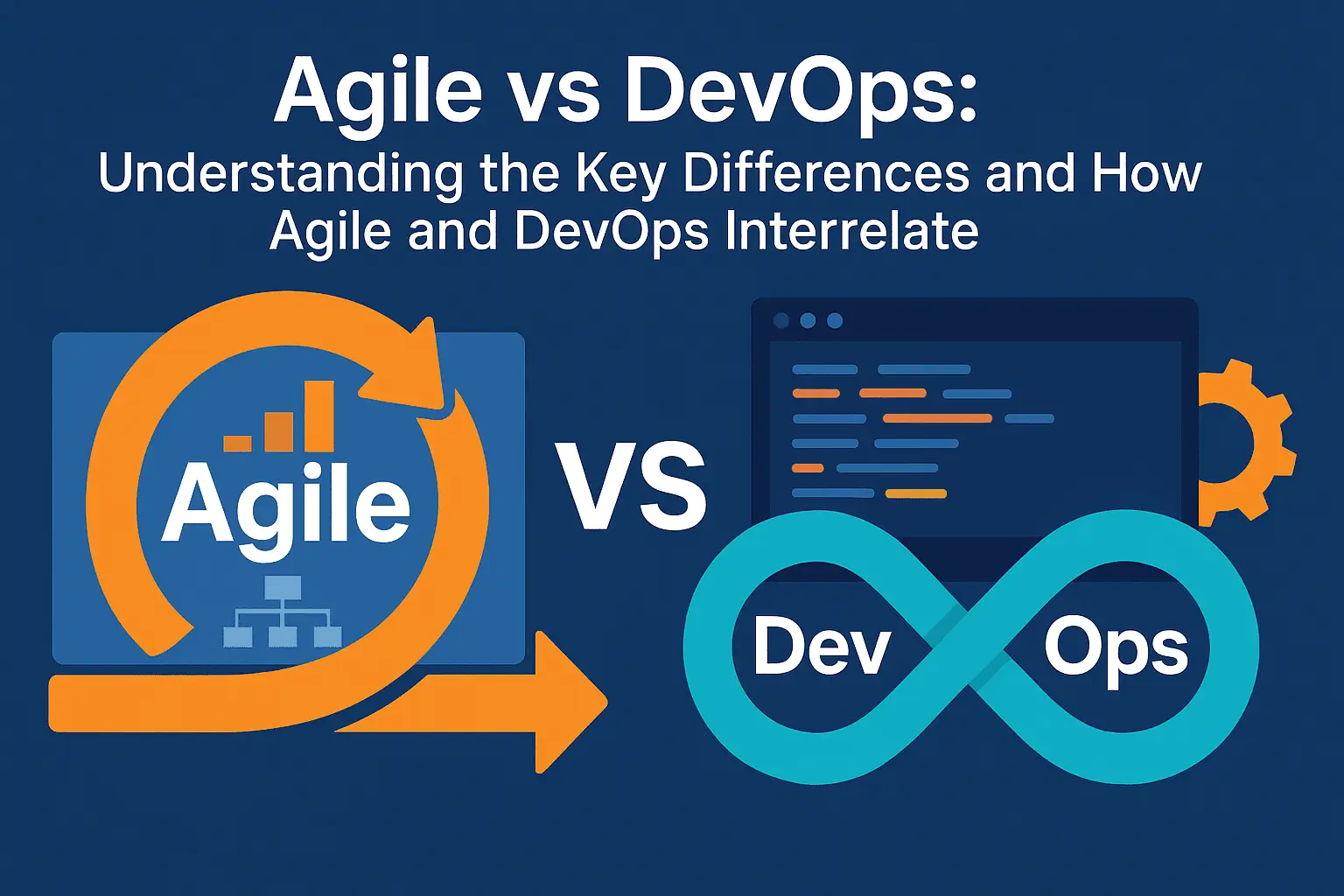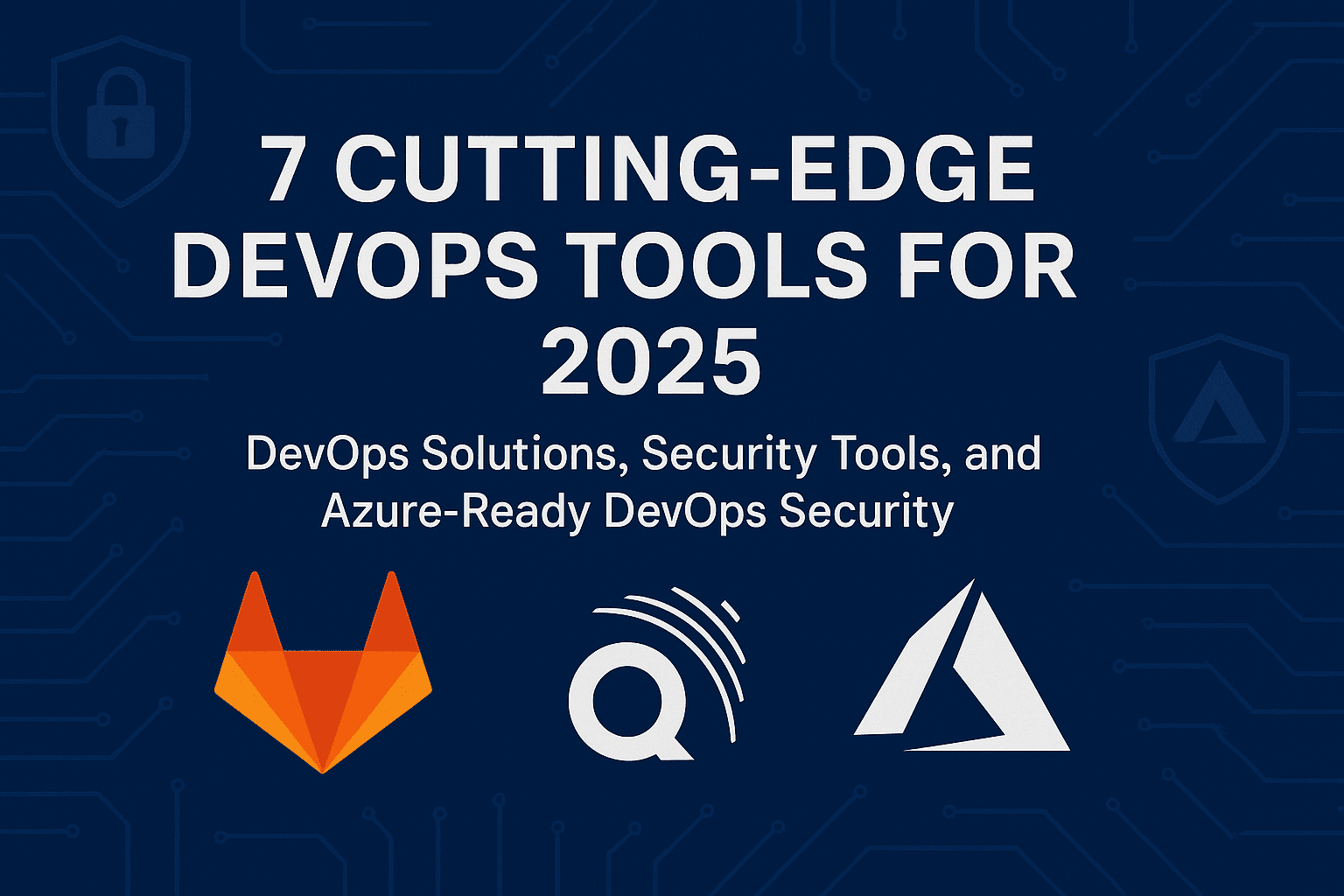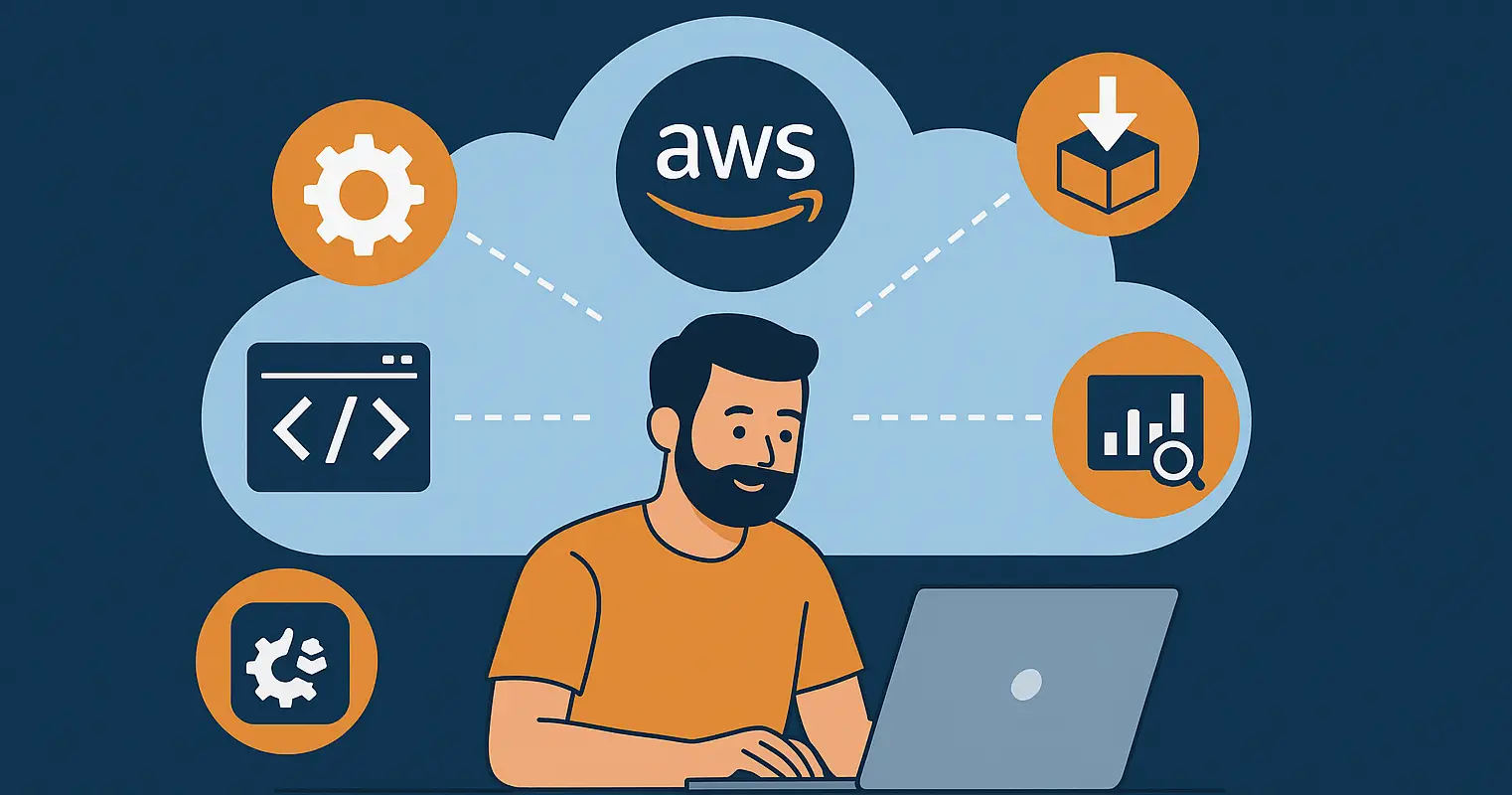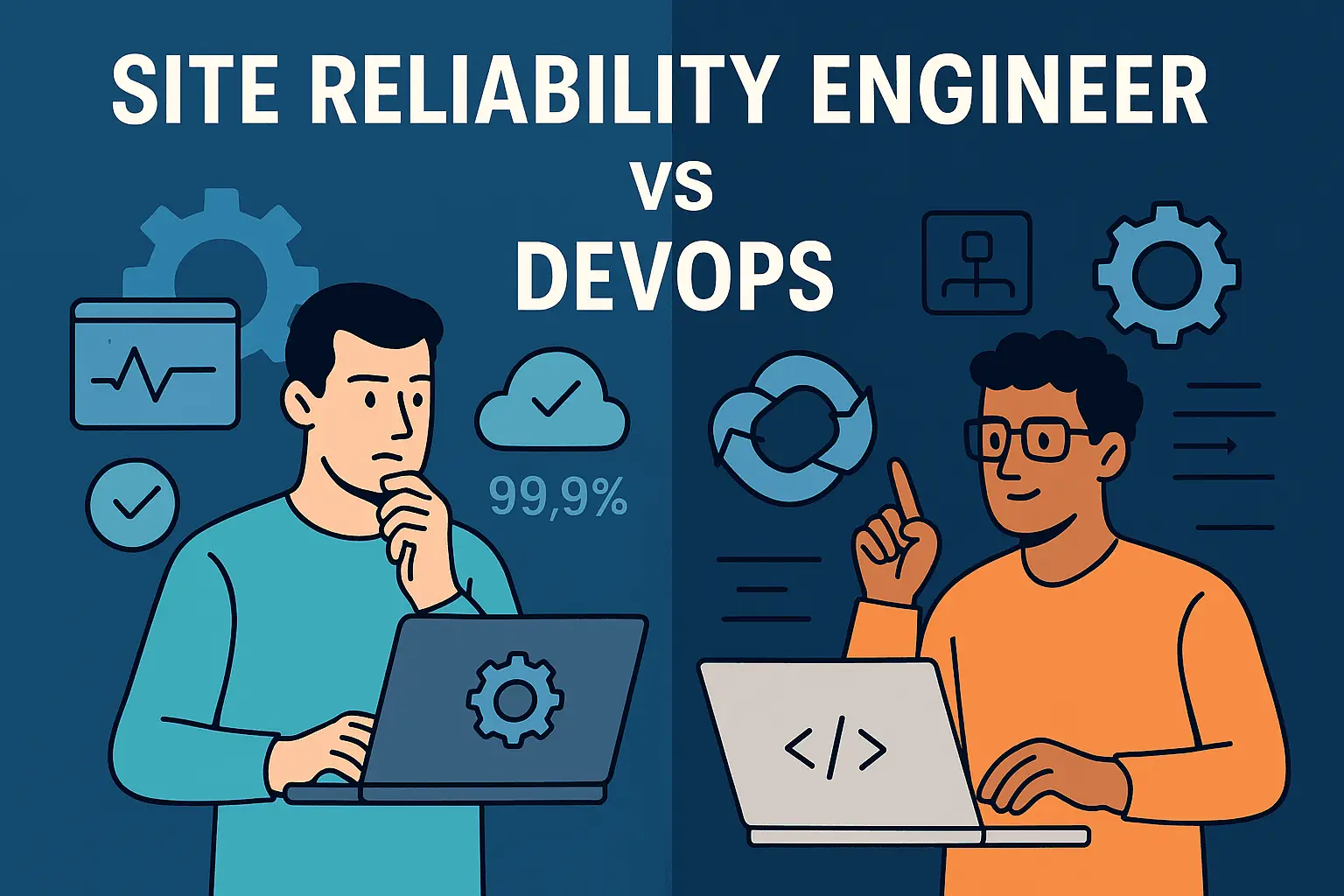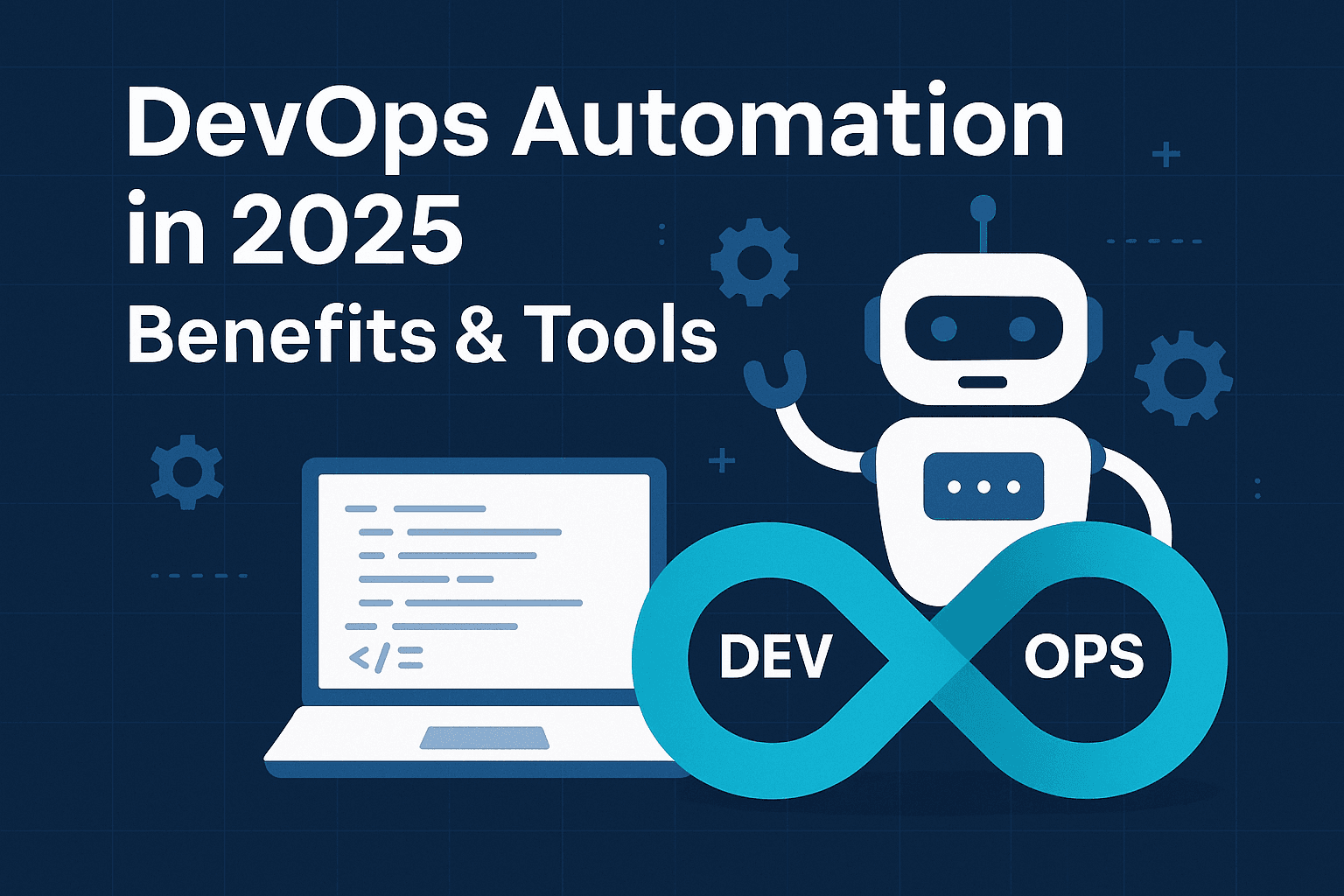Ever feel totally confused about Agile and DevOps? Like, everyone talks about them, maybe your boss demands them, but honestly… they kinda sound similar? Yeah, I get it. I’ve been there too. You hear “Agile” and “DevOps” thrown around meetings all the time, sometimes almost like they’re the same thing. But guess what? They’re really not. And understanding how they’re different – and how they actually work together – is super important.
So, let’s break it down. Think of me as your friendly guide, walking you through this step-by-step. No fancy jargon, no confusing charts (well, maybe one or two simple ones in your head!). Just plain talk, like we’re chatting over coffee. Ready?
Let’s dive in.
What is Agile?
Imagine you’re building a car. The old way was like planning every single nut and bolt for the whole car before you even started building the engine. Rigid, slow, and if the customer suddenly wanted, say, a sunroof instead of a regular roof? Tough luck, buddy! Way too late to change.
Agile flips that.
Instead of one massive, years-long plan, you build the car in small chunks – maybe start with the engine and basic frame first (a “sprint”). You get that basic car working quickly, show it to the customer, get feedback (“Actually, we really need that sunroof!”), and then you build the next chunk incorporating that feedback. Rinse and repeat!
Core Ideas of Agile Development:
- Values & Principles: It’s all in the “Agile Manifesto”. Stuff like valuing “Individuals and interactions over processes and tools” and “Responding to change over following a plan.”
- Iterative Development: Breaking big projects into small, manageable pieces (sprints – usually 2-4 weeks).
- Scrum: This is probably the most common way teams do Agile. It involves specific roles (Scrum Master, Product Owner), ceremonies (Daily Standup, Sprint Planning, Review, Retrospective), and artifacts (Product Backlog, Sprint Backlog).
- Team Collaboration: Constant talking, working closely together (Devs, Testers, Product Owners), focusing on delivering small bits of working software frequently.
- Customer Feedback: Getting the customer involved early and often to make sure you’re building what they actually need and want.
Co je DevOps?
Now, imagine that car you built using Agile. It’s awesome! But… how do you get it out of the factory and into the customer’s driveway? The old way involved huge delays. The “Dev” team (who built the car) would toss the keys over a giant wall to the “Ops” team (who run the factory and delivery trucks).
The operations team would grumble, “This thing barely runs! We can’t ship this!” and throw it back. Days, weeks, and months of arguing.
DevOps is about smashing that wall down. It’s not just a set of practices; it’s a whole culture or mindset where Dev and Ops work together as one DevOps team throughout the entire process, from writing the code to running it smoothly for users.
Core Ideas of DevOps (Development and Operations):
- Collaboration: Dev + Ops + sometimes Security (DevSecOps) = One Team. Breaking down the silos.
- Automation: This is HUGE. Automating everything possible: building the code, testing it, deploying it, and monitoring it. Less human error, way faster!
- Continuous Everything: Continuous Integration (CI – merging code changes frequently and automatically testing them), Continuous Delivery (CD – automatically preparing code for release), Continuous Deployment (CD – automatically releasing code to users). Think assembly line for software.
- Feedback Loops: Getting feedback not just from customers, but also from the running system (monitoring, logging) super fast to fix issues quickly.
How Agile and DevOps Work Together?
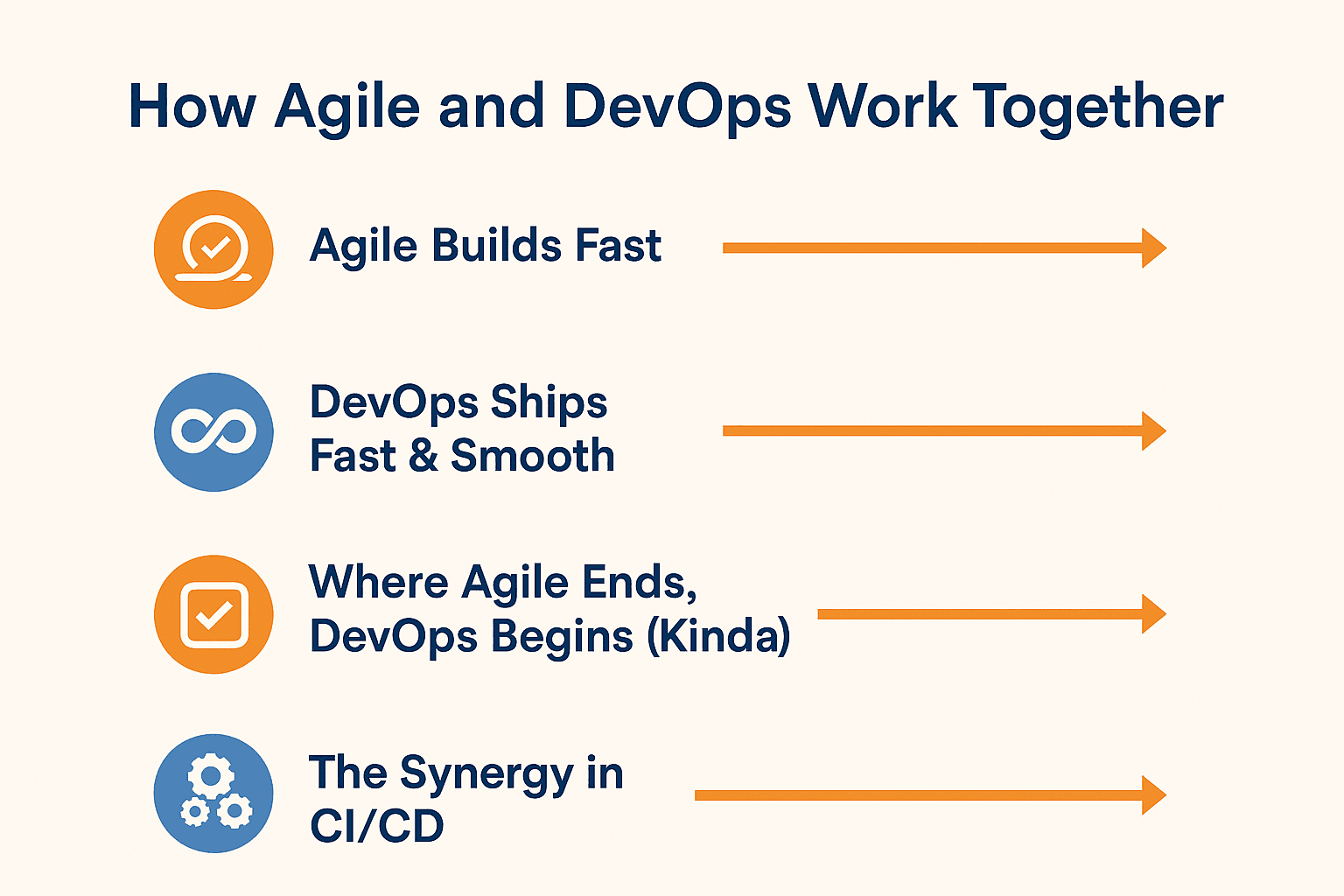
So, are they rivals? Heck no! Think of them as best buddies in the quest for awesome software.
- Agile Builds Fast: Agile teams work in sprints, building small features quickly. They get user feedback constantly. This creates a steady stream of new code that’s ready to go live. Think of Agile producing lots of little, tested car parts.
- DevOps Ships Fast & Smooth: DevOps kicks in to take those little parts (code updates) and get them assembled, checked, and delivered to the customer instantly and safely using automation (the CI/CD pipeline). It’s like the hyper-efficient factory and delivery system that can put that new sunroof on and get the car to the customer overnight.
- Where Agile Ends, DevOps Begins (Kinda): Agile’s main focus traditionally ended when the development team said, “This feature is done coding and testing!” Getting it live was someone else’s problem (Ops). DevOps picks up right there. It says, “Great! Now let’s automate getting this live safely in minutes, not weeks.” DevOps ensures the “done” feature is really done – meaning it’s delivered to the user and working well.
- The Synergy in CI/CD: This is where the magic happens. Agile teams commit small code changes frequently. DevOps automation (CI) grabs that code, builds it, runs automated tests. If it passes, it automatically moves further down the line (CD), potentially all the way to production. Agile provides the flow of small changes; DevOps provides the automated highway to deliver them. It’s a perfect match!
9 Key Differences Between Agile and DevOps
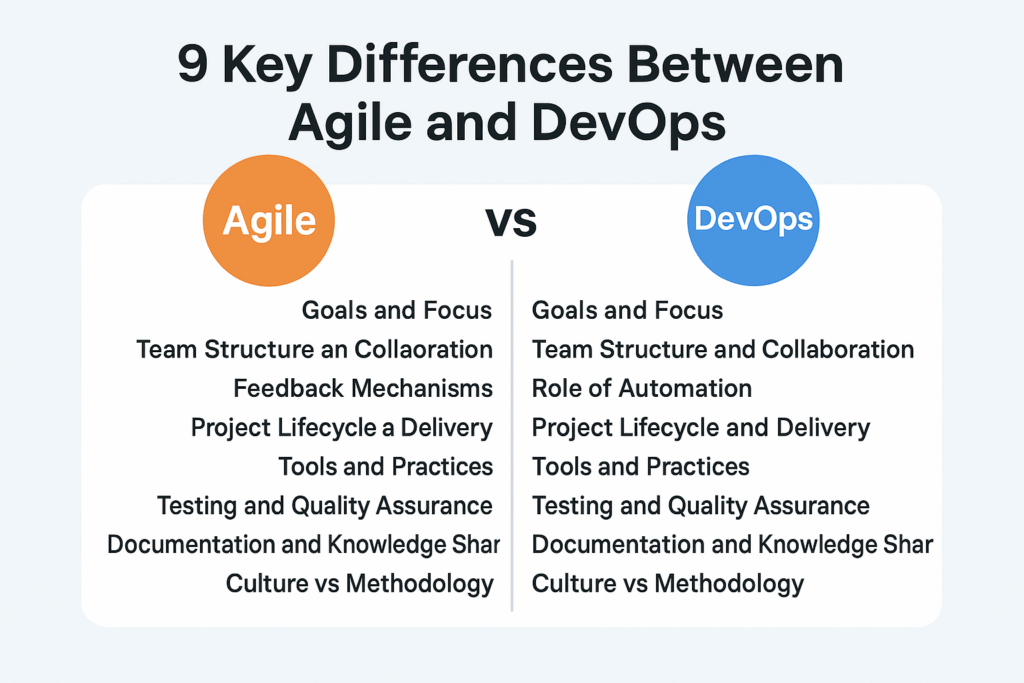
This is the meaty part. Let’s look at exactly how Agile and DevOps differ. Remember, they complement each other, but they are distinct.
1. Difference in Goals and Focus
- Agile: Its main goal is satisfying the customer by delivering valuable software frequently and adapting quickly to change. Focus: Flexibility and responsiveness during the development process. “Are we building the right thing, and can we change course fast?”
- DevOps: Its main goal is shortening the software delivery lifecycle and providing continuous, reliable releases. Focus: Speed, stability, and reliability of the entire delivery pipeline, from code commit to production. “Can we get what was built out to users safely and insanely fast?”
2. Team Structure and Collaboration
- Agile: Focuses on collaboration within the development team (developers, testers, product owner, Scrum Master). The team is cross-functional for building features.
- DevOps: Focuses on collaboration between traditionally separate teams: Development (Dev) + Operations (Ops) + sometimes QA and Security. It creates one unified team responsible for the entire software lifecycle. Breaking down the “wall of confusion.”
3. Feedback Mechanisms
- Agile: Feedback primarily comes from the customer or business stakeholders. It happens at the end of each sprint (Sprint Review). Feedback is about features and functionality (“Do you like this new button?”).
- DevOps: Feedback primarily comes from automated monitoring of the live system (performance, errors, logs) and operational metrics. It happens continuously, in near real-time. Feedback is about system health, performance, and deployment success (“The site slowed down after that last update!”).
4. Role of Automation
- Agile: Automation is helpful, especially for testing (unit tests, integration tests), but it’s not absolutely central to the core methodology. Manual processes are still common in many Agile teams.
- DevOps: Automation is absolutely essential and fundamental. Automating builds, testing, infrastructure setup, deployments, and monitoring is the engine that makes DevOps work. No automation, no true DevOps. It’s the assembly line.
5. Project Lifecycle and Delivery
- Agile: Manages the development lifecycle in iterations (sprints). Delivers working software increments frequently (e.g., every 2 weeks), but these increments may not necessarily go live to all users immediately. “Done” often means “ready for release,” not necessarily “released.”
- DevOps: Manages the entire delivery lifecycle (development, testing, deployment, operations). Aims for continuous delivery/deployment – the ability to release software changes safely and reliably at any time, potentially multiple times a day. “Done” means delivered and running in production.
6. Tools and Practices
- Agile: Tools focus on project management and development: Jira, Trello, Azure DevOps (Boards), Confluence, Version Control (Git). Practices: Scrum ceremonies, Kanban boards, user stories, sprint planning, retrospectives.
- DevOps: Tools focus on automation, infrastructure, and operations: CI/CD Servers (Jenkins, GitLab CI, GitHub Actions), Configuration Management (Ansible, Puppet, Chef), Infrastructure as Code (Terraform, CloudFormation), Containerization (Docker, Kubernetes), Monitoring (Prometheus, Grafana, ELK stack). Practices: CI/CD pipelines, IaC, automated testing at all levels, blameless post-mortems.
7. Testing and Quality Assurance
- Agile: Testing is integrated throughout the sprint. Focus is on functional testing (does the feature work as intended?) and user acceptance. Testing often happens towards the end of the sprint cycle before the review. QA is part of the core dev team.
- DevOps: Emphasizes continuous testing throughout the CI/CD pipeline, including non-functional testing (performance, security, reliability) early and often. Aims for quality to be “baked in” via automation. Shifts testing “left” (earlier in the process). QA practices become automated checks within the pipeline.
8. Documentation and Knowledge Sharing
- Agile: Values “working software over comprehensive documentation”. Documentation tends to be lightweight and focused (e.g., user stories, sprint goals, wikis for knowledge sharing within the dev team). Emphasis on face-to-face communication.
- DevOps: Requires robust documentation, especially for infrastructure, deployment processes, and automation scripts (Infrastructure as Code is documentation!). Knowledge sharing is critical across Dev and Ops silos. Runbooks (what to do when X breaks) are vital. Automation scripts serve as executable documentation.
9. Culture vs Methodology
- Agile: Primarily a project management methodology and set of frameworks (like Scrum, Kanban) for how to develop software. It prescribes specific roles, events, and artifacts.
- DevOps: Primarily a cultural and philosophical movement focused on collaboration, shared responsibility, and breaking down silos. It’s about how Dev and Ops work together across the entire lifecycle. While it uses practices and tools, it’s less about a strict framework and more about mindset and principles.
Key Takeaways: Agile and DevOps Work Best Together
Phew! That was a lot. Let’s catch our breath and bring it home.
Look, here’s the absolute bottom line: Agile and DevOps are not competitors. They are powerful complements. Trying to choose between them is like asking if you want the engine or the wheels for your car. You need both to go anywhere fast!
Agile gives you the framework to build the right things, flexibly and quickly, based on constant feedback. It gets features ready.
DevOps gives you the automation, collaboration, and cultural shift to get those features into your users’ hands instantly and reliably, while keeping the system stable.
Combining them is the real superpower. Think about it:
- Agile’s fast development cycles feed into DevOps’ automated delivery pipeline.
- DevOps’ rapid feedback from production informs the next Agile sprint’s priorities.
Together, they create a continuous loop: Build -> Test -> Deploy -> Monitor -> Learn -> Build Better.
This combo leads to what everyone actually wants: Faster delivery of high-quality software that users love, with fewer headaches and fire drills. You release small changes often, so if something breaks, it’s small and easy to fix. You get feedback constantly, so you’re always improving.
What’s the future look like? Honestly, the most successful tech companies already figured this out. They don’t do “Agile OR DevOps.” They do “Agile AND DevOps.” This integrated approach – often just called “Modern Software Development” – is becoming the standard for anyone who wants to compete. Organizations that cling to old, siloed ways are finding it harder and harder to keep up.
So, what should YOU do? If you’re only doing Agile, look at how to bring DevOps practices (especially automation and collaboration with Ops) into your world. If you’re pushing DevOps, make sure your development teams are working in an Agile way to provide that steady stream of small, testable changes. Focus on breaking down those silos, automating everything you can, and creating that feedback flywheel.

